A very rare French Louis XIII small brass lantern or chamber clock G. Estienne, Caen, first half of the 17 th century The posted two train bell striking movement with fine Roman Doric turned corner posts and separately wound trains with the going now with verge escapement for regulation by short small bob pendulum, the dial with fine foliate scroll decorated hour disc applied with sculpted steel trefoil hand tip and engraved with Arabic hour numerals for the alarm to outer track, within applied silvered narrow Roman numeral chapter ring with cruciform half hour markers, set onto a dial plate finely engraved with tulip, poppy, narcissi and other floral blooms and trails to the upper and lower margins, beneath conforming engraved shaped front fret centred with a vacant cartouche, small acorn finials and iron-strap bell bearer surmounted with a bulbous brass finial, the base with frame securing nuts and engraved G. Estienne ACaen to underside, (unrestored, formerly verge with balance regulation, lacking countwheel, pendulum rod, alarm and alarm hand; the bell and bearer replaced), 18cm (7ins) high excluding bell and bearer. G. Estienne of Caen does not appear to be recorded in the usual sources. The engraving to the dial plate of the current is very finely executed and composed of scrolling floral trails with different blooms arranged in a symmetrical manner. This engraving can be compared to that on the dial of a chamber clock dated 1588 by Francis Nawe illustrated in Dawson, Percy G.; Drover, C.B. and Parkes, D.W. Early English Clocks on page 18 (Plate 5), which although incorporates grotesques and a small amount of strapwork is very similar in feel and quality. Francis Nawe was a Huguenot immigrant who is believed to have come to London from Antwerp in around 1575 and died of the plague in 1593. Other timepieces with related engraving are two very similar small table clocks by Bartholomew Newsam illustrated in Early English Clocks on pages 26 (Plate 19) and 29 (Plate 26) and another drum clock by the same maker illustrated on page 28 (Plate 22). George White in English Lantern Clocks also illustrates the side panel of Francis Nawe s 1588 clock (on page 58, Figures II/23 & 24) and notes that the designs were after Etienne de Laune and Abraham de Bruyn When the engraving on these late 16 th century clocks are compared to those a little later in date it becomes clear that the size of the flowerheads increased and the designs became more abstracted although the symmetrical balance remained. This is well illustrated on the dial of wall alarm timepiece dating to before 1615 by Robert Harvey London, illustrated in White, George English Lantern Clocks on page 61 (Figure II/30). Interestingly on the same page White also illustrates a possibly English unsigned steel and brass chamber clock with related dial engraving and similar arrangement of hour hand tip applied to revolving disc (this time indicating the lunar calendar) within the chapter ring. One final clock with floral engraved dial worth considering is a silver example by David Bouquet dating to around 1650 illustrated in Early English Clocks on page 61 (Plate 69). The engraved blooms on this example are much larger than the present clock although some semblance of symmetry is retained whilst the quality of execution is good but not as fine as that on the current lot. From the above observations it would seem appropriate to suggest a date of around 1625 for the current lot. The movement was originally made with verge escapement with balance wheel regulation and has separately wound trains which also suggests an early date of manufacture.
A very rare French Louis XIII small brass lantern or chamber clock G. Estienne, Caen, first half of the 17 th century The posted two train bell striking movement with fine Roman Doric turned corner posts and separately wound trains with the going now with verge escapement for regulation by short small bob pendulum, the dial with fine foliate scroll decorated hour disc applied with sculpted steel trefoil hand tip and engraved with Arabic hour numerals for the alarm to outer track, within applied silvered narrow Roman numeral chapter ring with cruciform half hour markers, set onto a dial plate finely engraved with tulip, poppy, narcissi and other floral blooms and trails to the upper and lower margins, beneath conforming engraved shaped front fret centred with a vacant cartouche, small acorn finials and iron-strap bell bearer surmounted with a bulbous brass finial, the base with frame securing nuts and engraved G. Estienne ACaen to underside, (unrestored, formerly verge with balance regulation, lacking countwheel, pendulum rod, alarm and alarm hand; the bell and bearer replaced), 18cm (7ins) high excluding bell and bearer. G. Estienne of Caen does not appear to be recorded in the usual sources. The engraving to the dial plate of the current is very finely executed and composed of scrolling floral trails with different blooms arranged in a symmetrical manner. This engraving can be compared to that on the dial of a chamber clock dated 1588 by Francis Nawe illustrated in Dawson, Percy G.; Drover, C.B. and Parkes, D.W. Early English Clocks on page 18 (Plate 5), which although incorporates grotesques and a small amount of strapwork is very similar in feel and quality. Francis Nawe was a Huguenot immigrant who is believed to have come to London from Antwerp in around 1575 and died of the plague in 1593. Other timepieces with related engraving are two very similar small table clocks by Bartholomew Newsam illustrated in Early English Clocks on pages 26 (Plate 19) and 29 (Plate 26) and another drum clock by the same maker illustrated on page 28 (Plate 22). George White in English Lantern Clocks also illustrates the side panel of Francis Nawe s 1588 clock (on page 58, Figures II/23 & 24) and notes that the designs were after Etienne de Laune and Abraham de Bruyn When the engraving on these late 16 th century clocks are compared to those a little later in date it becomes clear that the size of the flowerheads increased and the designs became more abstracted although the symmetrical balance remained. This is well illustrated on the dial of wall alarm timepiece dating to before 1615 by Robert Harvey London, illustrated in White, George English Lantern Clocks on page 61 (Figure II/30). Interestingly on the same page White also illustrates a possibly English unsigned steel and brass chamber clock with related dial engraving and similar arrangement of hour hand tip applied to revolving disc (this time indicating the lunar calendar) within the chapter ring. One final clock with floral engraved dial worth considering is a silver example by David Bouquet dating to around 1650 illustrated in Early English Clocks on page 61 (Plate 69). The engraved blooms on this example are much larger than the present clock although some semblance of symmetry is retained whilst the quality of execution is good but not as fine as that on the current lot. From the above observations it would seem appropriate to suggest a date of around 1625 for the current lot. The movement was originally made with verge escapement with balance wheel regulation and has separately wound trains which also suggests an early date of manufacture.

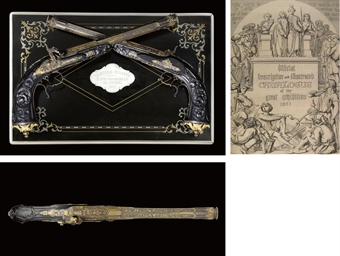
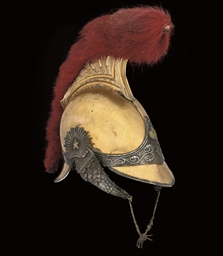
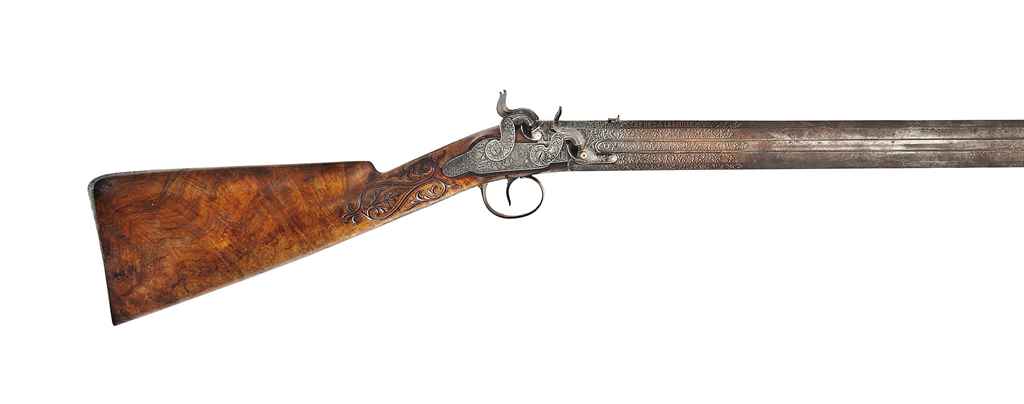
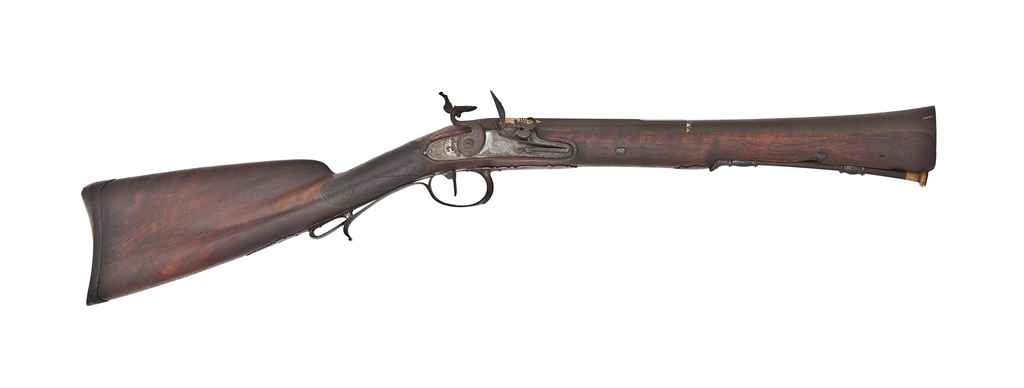
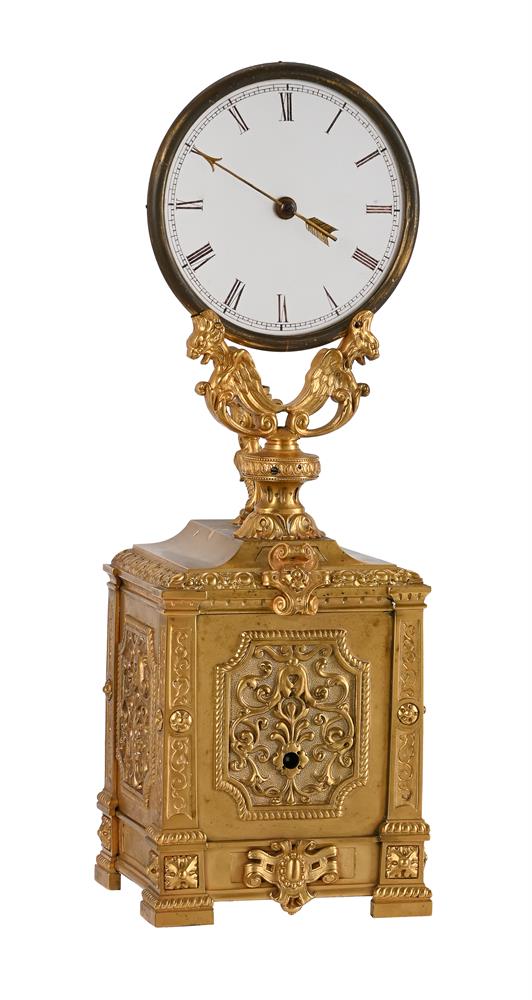



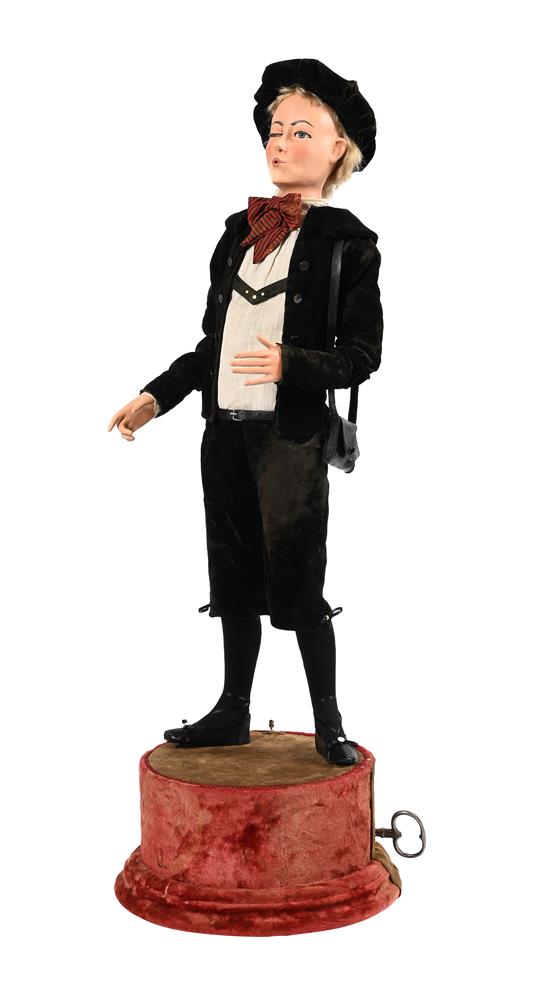
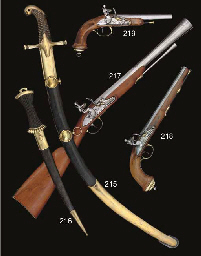
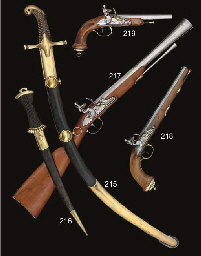
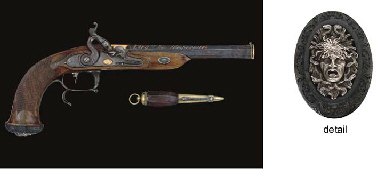
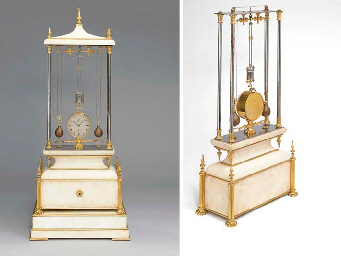

Testen Sie LotSearch und seine Premium-Features 7 Tage - ohne Kosten!
Lassen Sie sich automatisch über neue Objekte in kommenden Auktionen benachrichtigen.
Suchauftrag anlegen